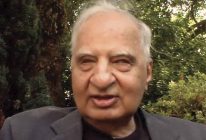


Yet Brown has succeeded brilliantly at what has always seemed to be her primary mission: creating an almost deafening weekly buzz around the magazine. The magazine has yet to turn a profit under her editorship, although the New York Times reported last fall that subscriptions are up nearly 40 percent, to more than 860,000. And it is probably time to tear a question from the mouth of another publicity-minded New Yorker, former Mayor Ed Koch: How is she doing? The business report - to use a measure beloved by Brown herself - has been mixed. It has been almost five years since Brown leapt from her perch as editor of Vanity Fair to take control of the New Yorker, the world's most venerated magazine - enough time for her to have left her mark on nearly every aspect of the journal Harold Ross founded in 1925. (Shirtless photos of Kato Kaelin? Roseanne as editorial consultant? Ken Auletta?) Depending on whom you ask, Brown is either her generation's most adroit zeitgeist surfer or the lead zombie in a highbrow remake of "The Texas Chainsaw Massacre." There's not a lot of middle ground. (No more 25,000-word articles about soybeans! No more coy phrasings - "A friend writes," "We've always felt" - in Talk of the Town! Fewer autumnal Ann Beattie short stories!) Her detractors lament that Brown has cold-bloodedly spiked whatever commitment the magazine has traditionally had to thoroughness, modesty and non-topicality. The only dragons that have been slain, her admirers argue, are the snobbery, pretension and profound self-indulgence that marked the magazine under her predecessors. Frazier and Kincaid have spit plenty of fire since quitting the magazine in an interview with Salon last year, among many others, Kincaid called Brown a vulgarian who has turned the New Yorker into "a version of People magazine."įor longtime readers of the New Yorker, however, Brown's remarks resonate on a more metaphorical level.

(The New Yorker is famous for its tenured ghosts, the lit-world Boo Radleys who lurk in corners decades past their prime.) She is also probably talking about gifted writers such as Ian Frazier and Jamaica Kincaid, who never bothered to hide their loyalty to the earlier William Shawn (1952-1987) and Robert Gottlieb (1987-1992) regimes. It is an interesting comment because it makes you pause to wonder: What dragons, exactly, is Tina Brown proud of having put to death?īrown is surely referring, at least in part, to the petrified mummies she has driven from the magazine's editorial staff. (Evans was reportedly eyeing a post in Tony Blair's Labor government.) As if to seal the matter, the couple have put their money where Brown's mouth is: The New York Observer reported last week that the pair paid nearly $4 million for a glitzy new Upper East Side apartment that includes "a library, six baths and three maid's rooms." "Teenandharry," as they are sometimes referred to here, appear to be staying put.Īnd why not? Brown is finally enjoying herself at the New Yorker, she told Smith, "now that the dragons have been slain and I am surrounded by talents like David Remnick and Joe Klein and Adam Gopnik." This is an interesting comment - and not merely because Joe Klein and Adam Gopnik aren't necessarily the first names that pop into one's head when contemplating the glories of the New Yorker circa 1997. It's all mad hackdom run amok!" That's what New Yorker editor Tina Brown told the gossip columnist Liz Smith recently, brushing aside whispers that she and her husband, Random House publisher Harry Evans, would soon be fleeing New York for London.


 0 kommentar(er)
0 kommentar(er)
